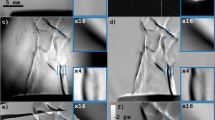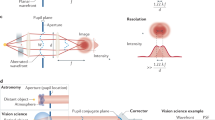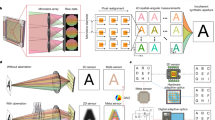Abstract
VARIOUS methods have been used for increasing the sensitivity of photographic emulsions prior to exposure in the telescope. For example, washing red sensitive (panchromatic) emulsions in ammonia or water, and latterly baking blue sensitive (orthochromatic) emulsions at 50° C have given reductions in the exposure times required to reach a given density, although at the cost of greater intrinsic fog and non-uniformities, and poorer photometric properties. More recently, placing the photographic plates in vacuum for several hours, with or without simultaneous baking, has come into common use for some emulsions, and this has been followed by baking in a dry nitrogen atmosphere (see ref. 1 and references therein).
This is a preview of subscription content, access via your institution
Access options
Subscribe to this journal
Receive 51 print issues and online access
$199.00 per year
only $3.90 per issue
Buy this article
- Purchase on Springer Link
- Instant access to full article PDF
Prices may be subject to local taxes which are calculated during checkout
Similar content being viewed by others
References
Hoag, A. A., and Schoening, W. E., Emulsion Bake Tests, (Kitt Peak National Observatory preprint, 1973).
Walker, M. F., Astrophys. J., 161, 835 (1970).
Author information
Authors and Affiliations
Rights and permissions
About this article
Cite this article
CORBEN, P., REDDISH, V. & SIM, M. Speeding up astronomical photography. Nature 249, 22–24 (1974). https://doi.org/10.1038/249022a0
Received:
Issue Date:
DOI: https://doi.org/10.1038/249022a0
This article is cited by
-
On the optical observation of galaxies with large redshifts
Nature (1977)
-
The elimination of low intensity reciprocity failure on hypersensitized Kodak IIIaJ plates
Astrophysics and Space Science (1976)
Comments
By submitting a comment you agree to abide by our Terms and Community Guidelines. If you find something abusive or that does not comply with our terms or guidelines please flag it as inappropriate.



